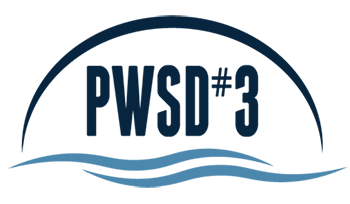Water Quality Resources
Boil Water Advisory & Instructions
What is a Boil Water Advisory?
A Boil Water Advisory is a preventative measure issued to protect the health of the community from water borne infectious agents. A Boil Water Advisory is issued only after careful consideration among representatives from public health, regulatory agencies and municipal departments.
What should I do under a Boil Water Advisory?
- Bring the water to a rolling boil. Boil the water for 3 minutes starting the timer when the water starts to bubble. Then cool the water and place it in clean containers for use.
- Create a supply of boiled water for cooking, drinking, and tooth brushing.
- Hot, soapy water can be used for dishwashing and kitchen/bathroom surface cleaning. As a precaution, add 1 tablespoon of bleach per gallon of water.
- Laundry water does not need to be treated.
- Unless otherwise noted, water for showering does not need to be treated.
- Hand-washing with soap and water should be followed up with hand sanitizer.
Water Emergency Supply Plan
The Water Emergency Supply Plan outlines the measures that will be taken to meet the water needs of Linn and Chariton Counties in the event of a water shortage. The critical variables determining which phase of the plan will be enforced are available supply water, daily customer demand, and anticipated precipitation that would greatly reduce the amount of outdoor water use in the service area.
Keeping our customers informed is the key to the Water Emergency Supply Plan. Customer awareness and water conservation response through all phases of the plan will ensure an efficient and adequate response to a water shortage problem.
Internal Conservation Efforts
Once the District declares the first level of alert in the Water Supply Emergency Plan, the Water Superintendent of the Linn and Chariton County
Water Districts will direct the following internal conservation measures:
- Suspend the Flushing Program and all non-essential flushing. All personnel will be directed to keep essential flushing to a bare minimum.
- Leak detection will become the highest priority of the Repair and Flushing Crew until the shortage is declared over.
- Increase customer education programs to reach as many customers as possible in the affected service areas.
- Suspend the flushing of new lines unless the new line will contribute towards alleviating the problem.
- Initiate communications with all fire departments within the affected areas to suspend all wet drills and to limit use to the bare minimum needed to provide adequate fire protection.
Levels of Conservation
The Level 1 Program is the least restrictive and the Level 4 Program is the most restrictive program.
Level 1: All customers are requested to voluntarily limit all non-essential outdoor watering to designated days. The designated days for customers
with addresses ending in odd numbers are Tuesday, Thursday, and Saturdays. The designated days for customers with addresses ending
in even numbers are Wednesday, Friday, and Sundays. Those customers that are not readily defined by physical addresses are requested to
voluntarily limit non-essential outdoor watering by 50%.
Level 2: The alternate day conservation program described in Level 1 becomes mandatory with appropriate enforcement.
Level 3: The conservation program described in Level 2 continues. In addition, customers are requested to voluntarily eliminate all non-essential
outdoor watering, even on their “designated” days.
Level 4: The conservation program described in Level 3 becomes mandatory with appropriate enforcement.
Note: “Non-essential Outdoor Watering”, for the above four levels of conservation, is defined as:
- Watering of lawns, trees, shrubs, flowers, and gardens.
- Use of fire hydrants (except for fire fighting and other essential purposes), including flushing of sewers and hydrants except as needed for public health and safety.
- Increasing water levels in scenic and recreational ponds and lakes except for minimum amounts required to support fish and wildlife.
- Filling or introducing additional water into swimming pools, fountains, reflecting pools, and artificial waterfalls.
- Use of water for dirt control or compaction.
- Washing sidewalks, walkways, driveways, parking lots, tennis courts, or other hard surfaces, and flushing of gutters.
- Washing buildings or structures other than for purposes of fire protection.
- Washing of motor or other vehicles.
PWSD3 may also implement water rationing should such a measure be deemed necessary.
Communication to Issue, Upgrade, Downgrade, or Withdraw the Level of Alert
The decision to issue, upgrade or withdraw the level of alert will be made by the Water Superintendent based on demand, storage, volume, predicated
rainfall and other factors.






